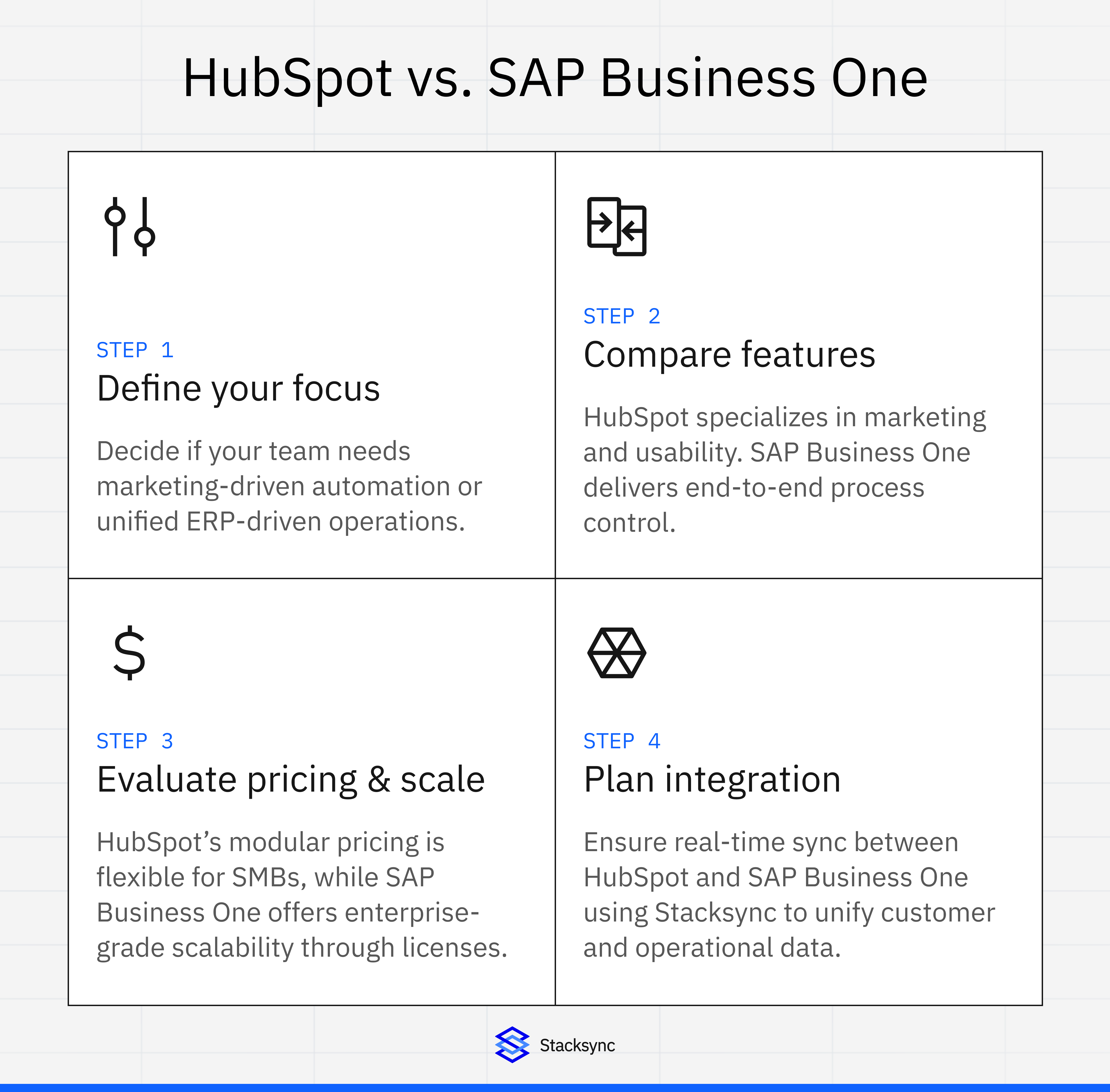

HubSpot vs SAP Business One CRM in 2025: explore differences in scalability, pricing, and automation. HubSpot leads in ease of use and marketing automation, while SAP Business One excels in ERP-driven workflows and data centralization. Learn which fits your company size and industry needs and how to maintain perfect sync between both.
HubSpot and SAP Business One serve distinct purposes in the CRM landscape. HubSpot focuses on inbound marketing, sales automation, and customer engagement, while SAP Business One integrates CRM with ERP for unified operations. Comparing both helps determine whether your business needs marketing-led growth (HubSpot) or process-driven management (SAP Business One).
HubSpot CRM provides an all-in-one marketing, sales, and service platform. It offers marketing automation, content management, lead tracking, and pipeline visibility within one ecosystem. HubSpot’s free plan allows easy onboarding, while paid hubs scale features for growing businesses. Its intuitive UI and integrations make it ideal for SMBs and mid-market organizations.
SAP Business One CRM is part of SAP’s ERP suite, designed for companies that need unified management across sales, inventory, and finance. It offers strong reporting, centralized data control, and integration with SAP’s business modules. While it requires more setup and technical expertise, it excels for organizations that need CRM and ERP functions working together.
HubSpot excels in user experience, automation, and marketing capabilities, making it ideal for customer acquisition and retention.
SAP Business One is built for process automation and operational visibility across departments.
